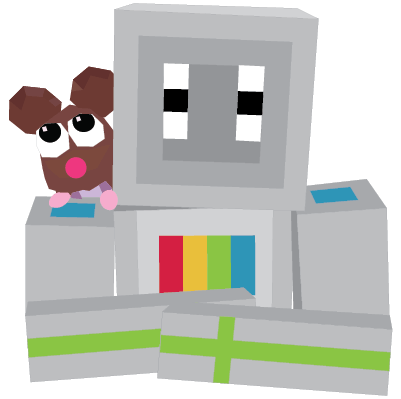Don’t Reinvent the Wheel: How Tech Supports ELA, ELD & ELLs in the Classroom
At Spring CUE 2025, I had the honor of sharing how I use technology to enhance teaching—especially in areas like ELA, ELD, and for English Language Learners (ELLs). Tools like the Piper Make are at the center of that work, and the approach I shared there is exactly what I want to share here with you now.
So, what’s the secret to combining technology with content standards?
Don’t reinvent the wheel.

Why Technology Works for Language Learners
Students are constantly seeking ways to succeed in school—and that’s especially true for those navigating the additional challenge of learning a second language.
The beauty of technology is that it breaks down barriers. Whether students are crafting a keychain with a 3D printer, flying a drone, building a cardboard arcade machine, or diving into coding and programming, these hands-on activities create opportunities for meaningful learning—no matter the language.
At Spring CUE, that’s what we set out to prove.
The Power of Piper Make
Each attendee at our session received a Piper Make Coding Kit—complete with a Raspberry Pi Pico, a breadboard, and plenty of components to get started on several projects.
One standout feature? A Minecraft-like world is used as the main platform for delivering tutorials. That alone opened doors for teachers who were hesitant about technology. For students, it’s even more powerful. Minecraft is familiar, approachable, and fun—which makes diving into something new way less intimidating.
And that’s exactly what students need: low pressure, high engagement.
How I Introduce New Technology in the Classroom
Here’s a little trick I use: I don’t lead with the standards.
Instead of saying, “Today we’ll learn history using this tech tool,” I simply say, “Let’s try something new.” Students dive in with curiosity, and that’s where the magic starts. Once they’re hooked, I slowly begin layering in the content standards during future lessons.
It’s not about hiding the learning—it’s about creating a safe space for exploration first.
Our Spring CUE Session in Action
That’s the same strategy we used at Spring CUE. We didn’t begin by diving into pedagogy or standards—we handed out the kits and had everyone jump into the tutorials. Only afterward did we reflect:
- What challenges did you face?
- How might this fit in your classroom?
- What possibilities did this open up?
You can do the same with students. Let them explore. Then ask them to write about it, present it, create a one-pager, or even record a short video reflection. That feedback process naturally builds skills in writing, speaking, and critical thinking.
(Click here for a copy of my Spring CUE presentation)

Supporting English Language Learners with Scaffolding
Supporting ELLs—or any student acquiring English—means offering smart scaffolds. Here are a few effective ones:
1. Multilingual Materials
Create instructional documents in English and the student’s home language. While we want to build English fluency, we also want to ensure they can access new content confidently.
2. Sentence Starters
These give students a model to express themselves and build academic language—especially useful in speaking or writing tasks.
3. Purposeful Grouping
Group students in ways that provide support and promote collaboration. Encourage them to use their native language if needed—and work together to translate their thoughts into English. This not only validates their voice, it also helps build language skills in context. You can also use the Google Translate Chrome extension for extra support.
Why Technology Belongs in Every Classroom
So, why should we bring tech into our classrooms—regardless of the subject?
Because it sparks engagement. And engaged students learn more.
Think about your last boring PD session. How much do you remember? Now think about one that was hands-on or interactive—how much of that stuck?
Here’s my go-to analogy:
Sure, we can eat a plain chicken breast and get the nutrients we need. But season it, add vibrant veggies, let it simmer a while—and it’s an entirely different (and more memorable) experience. Learning is the same way.
Instead of assigning a generic writing prompt, have students craft a story about a robot friend they met while coding with the Piper Make. The writing is still there—but now, so is the engagement, the connection, and the retention.
Final Thoughts
Technology doesn’t replace great teaching—it enhances it. It opens doors, builds confidence, and invites all learners, especially ELLs, to take part in meaningful learning experiences. When we start with exploration, layer in the standards, and support students along the way, we create classrooms that are not just effective—but unforgettable.
So next time you’re thinking about integrating tech, remember:
You don’t have to reinvent the wheel.
Just hand your students the keys—and watch where they drive.

About the Author

Hi, I’m Jesus Huerta, an educator with over 11 years of experience in teaching and educational technology. Currently, I serve as an EdTech Coach at Calexico Unified School District, where I support educators in integrating technology into their classrooms. In addition, I’m proud to be an adjunct faculty member with the Krause Center for Innovation (KCI), and I’ve also taught with NAF Berkeley, Upward Bound Imperial Valley, and other educational organizations.
My expertise includes makerspace development, technology-focused professional development, and project-based learning. If it’s classroom tech, there’s a good chance I’ve worked with it—feel free to ask!


